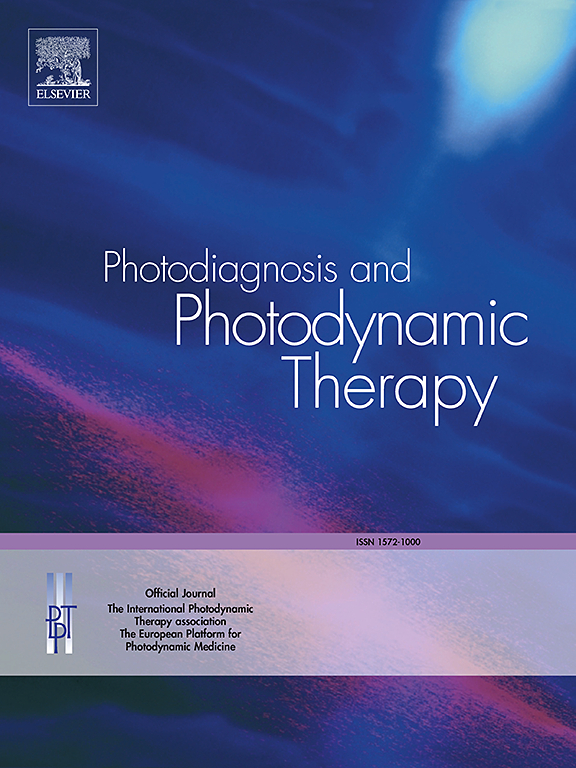Evaluating photodynamic therapy protocols for high-grade cervical neoplasia: A comparative study
IF 3.1
3区 医学
Q2 ONCOLOGY
引用次数: 0
Abstract
Cervical cancer has the infection by the Human Papillomavirus (HPV) as one of the main conditions for its development. Photodynamic Therapy (PDT) is a non-invasive treatment that combines the interaction between oxygen, light, and a photosensitizing molecule, resulting in cellular damage. HPV - infected cells because they are metabolically more active, can be better affected by this technique, promoting an alternative topic treatment for Cervical Intraepithelial Lesions (CIN). The present prospective and randomized study compared three PDT protocols applied to 31 patients with high-grade CIN and infected by HPV. Protocols used LEDs with a wavelength of 630 nm and a fluence of 150 J/cm2 as a light source, with different number of sessions and intervals between the three groups. There was no statistical difference between the protocols, however, we noticed a clinical difference that indicates a better response to PDT in the treatment with two PDT sessions, and an interval of 21 days between sessions. In this protocol, after 120 days of therapy, 50 % of patients had a regression in the lesion, presenting cytology compatible with CIN I or chronic cervicitis and after 6 months there was an 80 % cure rate. Furthermore, 50 % of patients who, before treatment, were carriers of high-risk HPV had a complete viral load clearance. Therefore, we conclude that a greater number of sessions, as well as a longer interval between the treatments day, is an efficient method to enhance the results of PDT, allowing more time for regeneration and viral clearance of the cervical tissue.

评价高级别宫颈肿瘤的光动力治疗方案:一项比较研究
人乳头瘤病毒(HPV)的感染是宫颈癌发展的主要条件之一。光动力疗法(PDT)是一种非侵入性治疗,结合了氧、光和光敏分子之间的相互作用,导致细胞损伤。HPV感染细胞由于代谢更活跃,可以更好地受到这种技术的影响,促进宫颈上皮内病变(CIN)的替代主题治疗。本前瞻性和随机研究比较了应用于31例高级别CIN和HPV感染患者的三种PDT方案。实验方案使用波长为630 nm、影响为150 J/cm2的led作为光源,三组之间的会话次数和间隔不同。两种方案之间没有统计学差异,然而,我们注意到一种临床差异,即两次PDT治疗和间隔21天的PDT治疗对PDT的反应更好。在该方案中,治疗120天后,50%的患者病变消退,细胞学表现与CIN或慢性宫颈炎相符,6个月后治愈率为80%。此外,50%在治疗前是高危HPV携带者的患者有完全的病毒载量清除。因此,我们得出结论,更多的疗程以及更长的治疗间隔是提高PDT效果的有效方法,可以有更多的时间用于宫颈组织的再生和病毒清除。
本文章由计算机程序翻译,如有差异,请以英文原文为准。
求助全文
约1分钟内获得全文
求助全文
来源期刊

Photodiagnosis and Photodynamic Therapy
ONCOLOGY-
CiteScore
5.80
自引率
24.20%
发文量
509
审稿时长
50 days
期刊介绍:
Photodiagnosis and Photodynamic Therapy is an international journal for the dissemination of scientific knowledge and clinical developments of Photodiagnosis and Photodynamic Therapy in all medical specialties. The journal publishes original articles, review articles, case presentations, "how-to-do-it" articles, Letters to the Editor, short communications and relevant images with short descriptions. All submitted material is subject to a strict peer-review process.
 求助内容:
求助内容: 应助结果提醒方式:
应助结果提醒方式:


